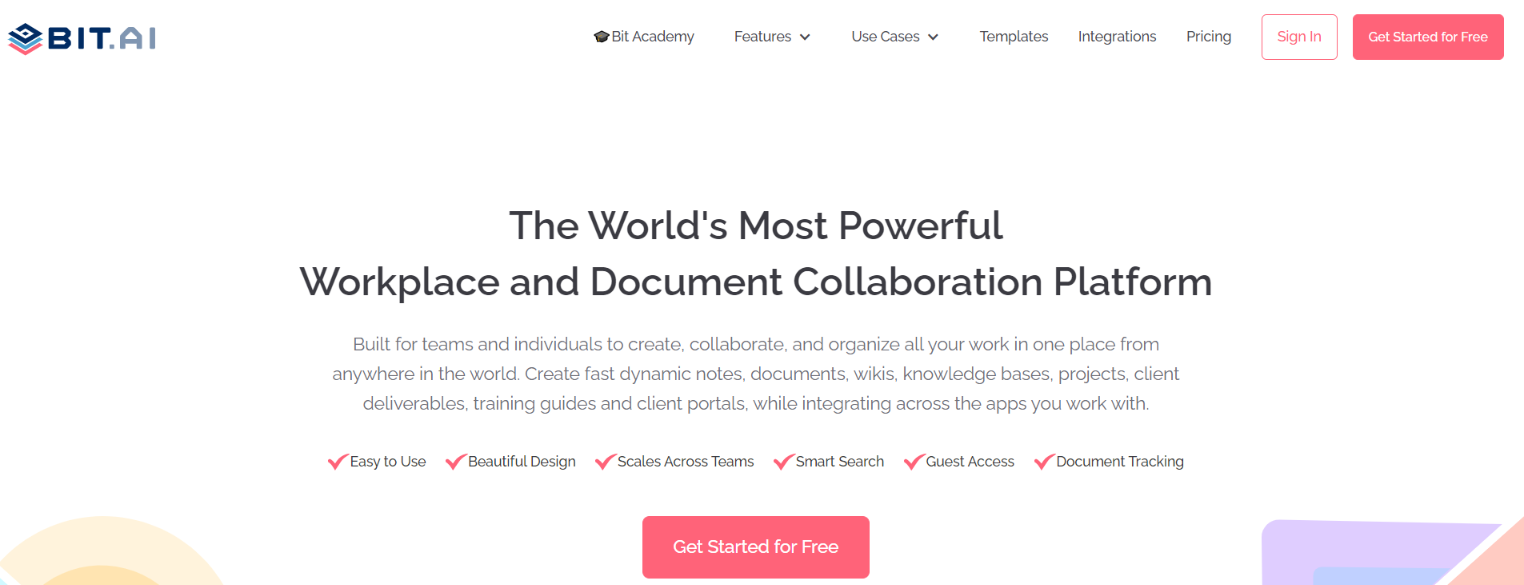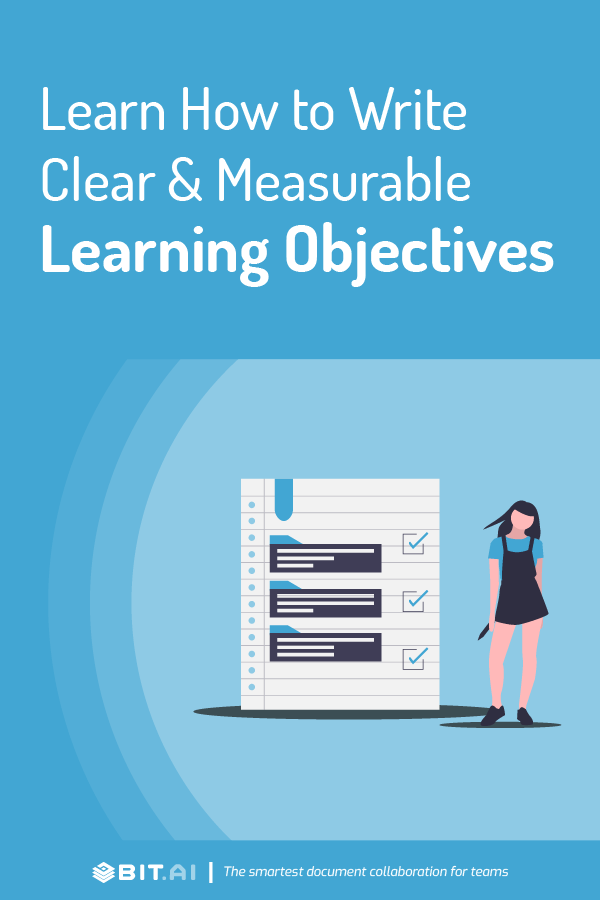Wondering how to set your own learning objectives to have fruitful and productive classroom teaching? No worries, we have got you covered! Read on…
Being a teacher is one of the most challenging professions in the world, we admit it. With so many tasks and students to manage at once, it cannot be an easy job.
What is taught in classrooms often ends up shaping the students’ futures, from their minds, attitudes, and beliefs to their knowledge and capabilities. That is a huge responsibility that rests upon a teacher’s shoulders. Keeping that in mind, teachers also need to ensure that they’re teaching everything in the right manner.
What’s more? As a teacher, you need to ensure that there’s a direction to your teaching, otherwise, it will be difficult to know whether or not your students are progressing further.
How do you give direction to your teaching?
Well, to answer that simply, one of the easiest ways of giving direction and some achievable target for your teaching is to determine and convey learning objectives.
Now, ‘learning objectives’ can sound like jargon words in isolation, but you don’t have to worry because we’ve got you covered with the complete guide on the what’s, why’s, and how’s of learning objectives.
Read on!
What are Learning Objectives? (Definition)
Learning objectives are detailed explanations of what your students should be able to do by the end of a learning process or classroom teaching. In essence, learning objectives should be brief, simple, and concrete statements about what your students should be able to do as a result of the teaching, activities, and learning that has occurred at the end of a lesson. They are also sometimes known as learning outcomes.
There are some simple characteristics of learning objectives, which have been mentioned as follows…
- They are related to specific goals rather than the method/process for achieving those goals.
- Objectives are specific and measurable, rather than being vague and unmeasurable.
- Objectives are written for the benefit of students.
We’ve already talked about how writing learning objectives can provide direction to your teaching, but there are more benefits than that when it comes to learning objectives.
Don’t believe us? Well, scroll ahead to find out more about why you should be investing your time in writing learning objectives!
Read more: 12 Best Student Tools for Better Learning in 2022
Why Do You Need to Define Learning Objectives?
In simpler words, what are the benefits of writing learning objectives?
To put it as briefly as possible, well-defined and specified objectives are important because they…
- Provide a clear goal for your students to concentrate their learning efforts
- Guide your range of educational activities
- Guide your evaluation methods
Let’s take a look at some of the benefits in detail…
1. Identifying Learning Outcomes
First and foremost, learning objectives help you in identifying learning outcomes and concentrate your teaching on them. They assist you in clarifying, arranging, and prioritizing learning. Moreover, they also help you and your students in measuring success and motivates them to take responsibility for their learning.
2. Helps students achieve long-term goals
Secondly, learning objectives are a way for teachers to organize, sequence, and schedule learning outcomes for a given teaching period.

It is usually done for the purpose of moving your students to reach their broader, long-term educational plans, such as achieving learning standards, doing well on a test, or graduating from high-school or college.
3. Articulating Academic Expectations
Learning objectives are also a way to develop and express academic standards for students so that they know what is expected of them precisely. It is suggested that when learning objectives are explicitly articulated to learners, they would be more likely to achieve the objectives presented.
On the other hand, when students don’t know what is required of them or when learning objectives are missing or ambiguous, it can lead to uncertainty, anger, or other factors that may hinder the learning process.
4. Job Evaluation of Teachers
Student Learning Objectives are generally used by a lot of states in the process of job evaluation for teachers. Learning Objectives are compared against the Learning Outcomes to see whether the teacher was able to deliver on the objectives that were set in the first place.
Now that we’ve looked at all the benefits of writing learning objectives, let us finally dive into the complete step-by-step process of writing measurable learning objectives. Let’s go!
Read more: How To Create A Recommended Reading Document?
How to Write Learning Objectives? Follow these Steps!
It’s pretty simple to write learning objectives once you get a hang of the concepts that surround the notion of learning objectives. Let’s take a look at these steps…
Step 1. Identify the knowledge level required to achieve your goal
Before you start writing your learning objectives, pause for a moment, and think about the sort of improvement that you want your teaching to make.
In simpler words, what is it that you want your students to do differently at the end of the teaching process? Learning occurs primarily in 3 domains, which are mentioned as follows:
- Cognitive Domain (Knowledge) – The cognitive domain is the domain that gets the most attention in instructional programs. It includes the objectives related to information and knowledge, labeling, resolving, predicting, and other academic aspects of education.
- Psychomotor Domain (Skills) – The second group for categorizing learning goals is the psychomotor domain. It involves the skills needed for skeletal muscles to be used and organized. It is easier to observe, define, and quantify psychomotor behaviors than cognitive or affective behaviors.
- Affective Domain (Attitudes) – The third category of learning is the affective domain, which involves behaviors, attitudes, beliefs, and feelings, which is the toughest to measure amongst students, although it is highly relevant in education as it affects the way a student decides to behave.
Step 2. Choose an Action Verb
Once you’ve figured out what domain you’re going to concentrate on for your learning objective, it’s time to start planning your objective. Doing that will help you to have an action verb at the appropriate level of learning to explain the actions.

We have compiled a list of action verbs separated by domain. For every domain of learning, avoid using more than one action verb, and make sure that it’s a verb that can be calculated or measured.
Cognitive Domain
| Knowledge | Comprehension | Application | Analysis | Synthesis | Evaluation |
| define | classify | apply | analyze | arrange | assess |
| identify | compile | calculate | calculate | assemble | compare |
| label | conclude | demonstrate | categorize | compose | critique |
| list | discuss | develop | classify | construct | decide |
| match | describe | interpret | criticize | design | determine |
| name | explain | locate | compare | develop | establish |
| recall | express | perform | contrast | diagnose | evaluate |
| recognize | give examples | practice | determine | manage | judge |
| record | identify | predict | differentiate | organize | justify |
| relate | interpret | present | distinguish | plan | measure |
| repeat | recognize | report | examine | propose | rate |
| select | summarize | use | outline | relate | recommend |
| state | translate | operate | test | summarize | select |
Psychomotor Domain
| Assemble | Diagram | Implement | Package | Refill | Sketch |
| Attach | Dictate | Inspect | Perform | Regulate | Sort |
| Balance | Direct | Instruct | Plant | Renovate | Splice |
| Build | Dismantle | Interview | Portion | Repair | Stratify |
| Bundle | Document | Lift | Position | Replace | Sterilize |
| Calibrate | Draw | Line | Prepare | Reproduce | Tape |
| Care For | Duplicate | Load/Reload | Press | Retrieve | Terminate |
| Clean | Edit | Locate | Process | Route | Transfer |
| Code | Execute | Log | Program | Save | Transplant |
| Collate | Fix | Make | Proofread | Search | Treat |
| Collect | Format | Manage | Propagate | Simplify | Trim |
| Conduct | Gather | Measure | Prove | Secure | Troubleshoot |
| Conserve | Grade | Mix | Provide | Select | Verify |
| Construct | Grid | Mount | Prune | Separate | Wash |
| Control | Harvest | Operate | Raise | Sharpen | Write |
| Design | Highlight | Organize | Recheck | Simulate |
Affective Domain
| Receiving | Responding | Valuing | Organizing | Characterizing |
| Listen To | Reply | Attain | Organize | Believe |
| Perceive | Answer | Assume | Select | Practice |
| Be Alert to | Follow Along | Support | Judge | Continue to |
| Show Tolerance of | Approve | Participate | Decide | Carry Out |
| Obey | Continue | Identify With |
Step 3. Write Your Very Own Objective
Once you’ve figured out the domain of learning that you want to target, along with the action verb that you want to explain the learning objective, it’s time for you to frame your learning objective.
Effective learning objectives concentrate on what the learner should know or be able to do by the end of a given period of time and show how to demonstrate that knowledge or ability.
Step 4. Verify Your Learning Objective
Make sure the four pieces are included in your goals: audience, behavior, condition, and degree of mastery.

Here are the A, B, C, D’s that should include each objective:
- Audience: It is crucial that your objective is defined by the people who will be doing the learning. “This will typically include the word “learner” or “participant.
- Behavior: You will also need to define what the participants are going to be able to do differently. Your action verb will contain this part.
- Condition: This section of the aim will identify the participants’ situation.
- Degree of Mastery: This aspect of the target is closely related to the improvement inactions, as the degree of the change is stipulated.
Try to mark each of the four components of your goals to make sure you have not missed something. The audience will be italicized, the action will be underlined, the situation will be in standard form, and the degree of mastery will be bolded.
Step 5. Repeat the Process for other Objectives
The last step on the list, go through this process for each and every objective. Don’t stop until you believe that you have enough objectives to assess your students’ success effectively.
Keep in mind that objectives act as checkpoints that contribute to a target being achieved. It is critical that you have enough objectives to avoid getting lost during the teaching process. Always begin with what you would like to accomplish at the very end, and work your way backward.
Do you still need a helping hand for creating learning objectives?
Not sure if you have the right tool at your disposal?
We have just the right thing for you and your needs!
Bit.ai: The Ultimate Tool for Creating Learning Objectives
Learning objectives are the North Star of your teaching endeavors. They give you direction and guidance about the manner in which you need to teach.

It is often better to take help and second opinions from your colleagues while making these objectives to be doubly sure about the direction in which you’re trying to propel the entire classroom, which is where tools like bit.ai come in!
bit.ai is the world’s most powerful document collaboration tool and platform. It is built for teams and individuals to create, collaborate, and organize all your knowledge in one place from anywhere in the world.
Bit allows real-time collaboration on your documents. You can invite colleagues, partners, & clients to join you to collaborate & work together in real-time. You can also edit & add comments as you create products, plans, proposals, and more.
Here are some of the main benefits of using Bit:
- Collaborate in real-time
- Interlink learning objectives and other documents
- Create fully responsive documents
- Create lesson plans only visible to yourself or your colleagues
- Track engagement on shared learning objectives with students, etc.
Before you go!
Our team at bit.ai has created a few awesome education templates to make your processes more efficient. Make sure to check them out before you go, you might need them!
- Class Notes Template
- Lesson Plan Template
- Letter of Recommendation Template
- Recommended Reading Template
- Research Paper Template
- Thesis Template
- Checklist Template
- To-Do List Template
- White Paper Template
- eBook Template
Final Words
With that, you’re now all set to make your own learning objectives to have fruitful and productive classroom teaching, with robust tools like bit.ai at your disposal!
All that you need to do is simply create an account on bit.ai and get access to the world’s most powerful document collaboration tool! Sounds like a pretty sweet deal, right?
Do you have any queries or questions on how to write measurable learning objectives? Feel free to reach out to us at @bit_docs, and we’d be happy to help you!
Further reads:
How To Create Effective Lesson plans For Students?
9 Awesome Assignment Writing Tips to Get Better Marks!
Study Guide: What is it & How to Create an Amazing One?
How To Make Class Notes Worth Reading?
Best Homeschooling Apps and Tools to Educate Kids!
Student Collaboration: What, Why, and Tools!

Related posts
Bit.ai | Watch to Learn More
What is Bit.ai?
Bit.ai is an innovative AI-driven knowledge and Document Managment suite designed to empower knowledge workers by streamlining the creation of, documents, wikis, and notes. With an intuitive interface and seamless integration, Bit.ai acts as a versatile assistant to help you collaborate, generate, organize, and visualize your ideas effortlessly. Whether you are drafting a report, managing a project, collaborating with your team or clients, or brainstorming new concepts, Bit.ai brings intelligence and creativity to every aspect of your work process.



